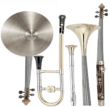4.1 Orchestration methods: Doubling
A unison doubling occurs when two or more instruments play the same part, making it challenging to determine the original voice from its double. A doubling is more of the same, but from a textural point of view invisible. Doublings do not add to the number of textural elements; nevertheless, they contribute to layering within an element, as the doubling is not entirely identical to what it doubles. Consequently, what is doubled can no longer be perceived as a unique expression of one instrument.
Doublings can have many different reasons. They might be employed to achieve a specific loudness level, occupy a particular pitch register, or result in the fusion of composite timbres, forming a new virtual instrument. In the following section, different doubling methods will be examplified, ranging from unison doublings to those displaced by pitch intervals or temporal units, and more advanced types such as partial doublings and double exposures.
4.2 Unison and octave doublings
The most characteristic orchestration method may be doubling by unisons. It is “institutionalized” in the five orchestral string sections, with members of each string group generally playing in unison.1 The sound of unisons constitutes the archetypal orchestral string sound. Yet, this phenomenon is hardly referred to as a doubling at all. The difference in sound between the string section of an orchestra and a string quartet does not only relate to loudness. All the subtle noises, color changes, and fluctuating intonations of a solo violin are replaced by the sound of sustained pitches, timbral smoothness, and dynamic potential in the orchestral string group. The unison doubling has this capacity for fusion and transformation, depending on how much the composite instruments have in common. For octave doublings and unison doublings where the composite instrument are timbrally more diverse, fusion may be more difficult to achieve. To create an equal balance between the woodwinds, for example, each instrument will have to accommodate the “weaknesses” of its partners. When doubling each other, the clarinet must limit its span in volume to match that of the oboe, just as the oboe must smoothen its attack to match that of the clarinet. In the 2nd movement from Tchaikovsky’s Symphony No. 6, a remarkable difference appears between the same melody played as a complete fusion of the cellos in mm. 1-3 (Figure 23, top) and as a much more thinly layered woodwind section in octave doublings (Figure 23, bottom).
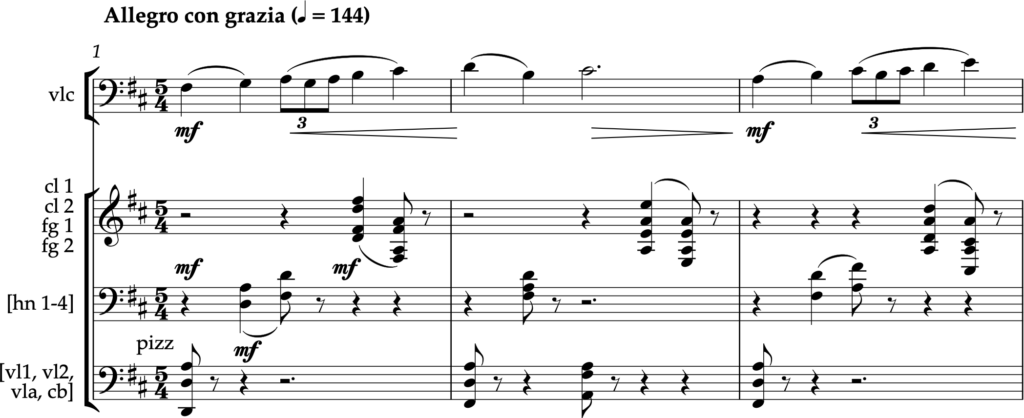
· · · · ·
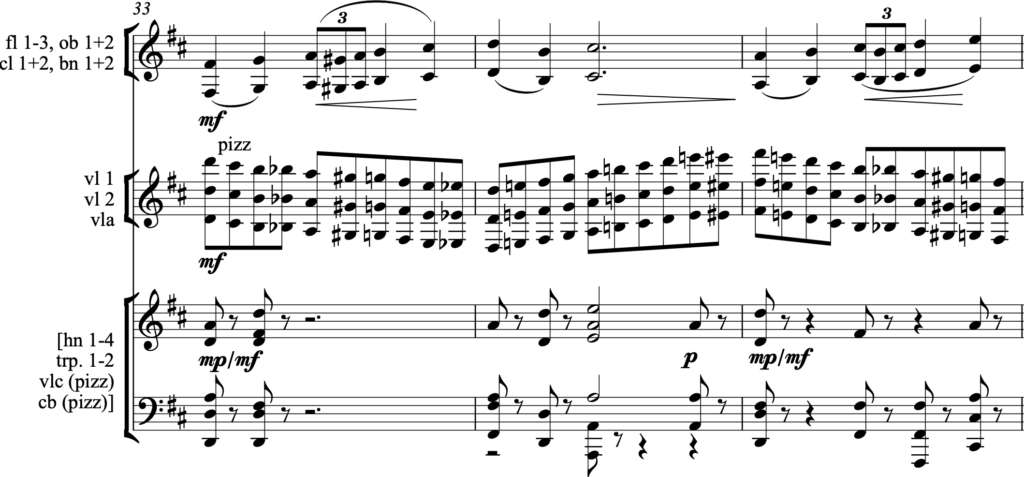
Figure 23. Despite both excerpts consisting of unison and/or octave doublings, these two realizations of the opening theme from Tchaikovsky’s Symphony No. 6, 2nd movement, sound remarkably different. Whereas the cello group merges smoothly in mm. 1-3, the woodwind section in mm. 33-35 sound more like a layered tapestry of orchestral colors.
Moving the instruments further apart, like in a two-octave doubling with an empty octave in between, the doublings tend to change character entirely. In Figure 24, for example, the result is more one of two instruments that coincidentally play the same melody than of a single virtual instrument.

Figure 24. Stravinsky’s Symphony of Psalms, 1st movement, excerpt. Due to the two-octave separation between oboes 1 and 3, they do not merge easily into a single virtual instrument.
4.3 Doublings by displaced interval
An octave doubling is essentially a reproduction of the original voice displaced by the interval of an octave. Yet, this vertical displacement could occur at any other interval. Parallel movements introduce a coloring effect to whatever is being doubled, incorporating the participatings instruments timbre and the characteristic interval of displacement between them. In Figure 25, the oboes play in parallel thirds, and they are doubled an octave below by two (unconventionally) low-pitched flutes.2

Figure 25. Tchaikovsky’s Symphony No. 6, 2nd movement, excerpt. Two flutes playing parallel thirds and two oboes also playing parallel thirds, albeit at an interval of an octave above the flutes.
Parallel motion in thirds (or any other interval) typically, as in Figure 25, aligns with the underlying scale, leading to shifts between minor and major thirds. Parallel motion at a fixed interval can be described as a mixture, similar to that of an organ.
In Fig. 25, only the oboes and flutes are shown. When the remainder of the woodwind section is added, a more intricate type of doubling emerges. In this case, the flute and oboe are “doubled” in inversion by the clarinets and bassoons (with a few minor adjustments) (see Figure 26).
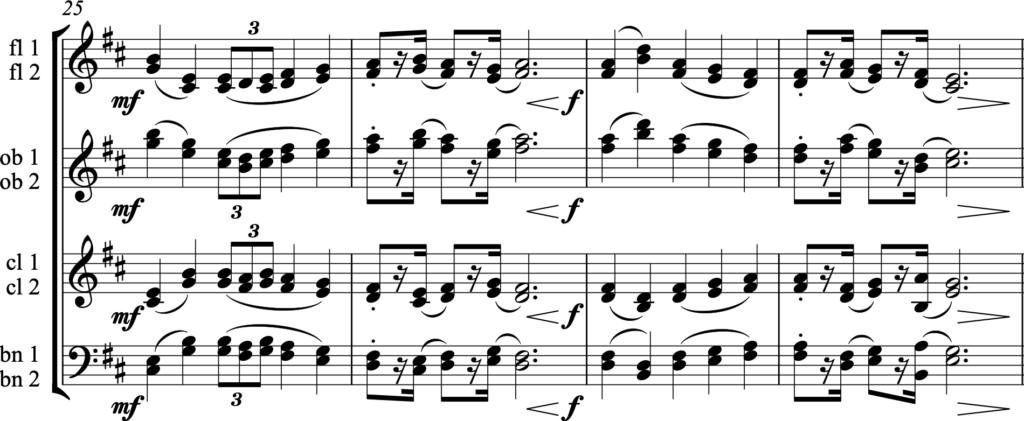
Figure 26. Tchaikovsky’s Symphony No. 6, 2nd movement, excerpt. The flute and oboe are “doubled” in inversion by the clarinets and bassoons
The inverted voices can be perceived as an alternative version of parallelism or as an independent textural element since they balance on the border between the same and something else.
How to solve this in a non-instrumental reduction is not only a question about the inverted voices but also about the parallel thirds. Should they stay in a reduction? Are the thirds part of the texture or part of the realization through orchestration? As more doublings are presented throughout this chapter, the line between what might be described as composition and orchestration will become more blurred. However, since this book focuses on orchestration, it will delve as far as possible into the orchestral perspective.
4.4 Doublings by similar motion
In similar motion the constituent voices are no longer “copies” of each other; similarity is defined with fewer constraints as merely the same direction and rhythm. In Figure 27, showing orchestral similar motion, the resulting impression of individual voices is further magnified by the timbral difference between the double-reed instruments and the solo cello.

Figure 27. Similar (but not parallel) motion between oboes 1 and 2, cor anglais, and solo cello in Messiaen’s Turangalîla Symphony, 1st movement.
Similar motion is also found between the wind instruments (cl 1-2 and bn 1-2) in the accompagniment in the beginning of Tchaikovsky’s Symphony, 2nd mov.

Figure 28 Tchaikovsky’s Symphony No. 6, 2nd movement, excerpt. Similar motion between cl 1-2 and fg 1-2.
4.5 Doublings by temporal displacement
Similar to doublings that can be vertically displaced by fixed or variable pitch intervals (as observed in parallel and similar motion, respectively), they can also be horizontally displaced. Temporal displacement may involve a fixed note value or varying value. In Figure 29, the temporal displacement between the 1st and 2nd clarinet not only changes from note to note but also in relation to who is in front of whom.

Figure 29. Lutoslawski: Livre pour orchestre, 3rd movement, excerpt. The variation in the temporal displacement creates a heterophonic texture.
Figure 30 might be simply read as motivic diminution, but it could also be understood as several time-displaced doublings in double-time.
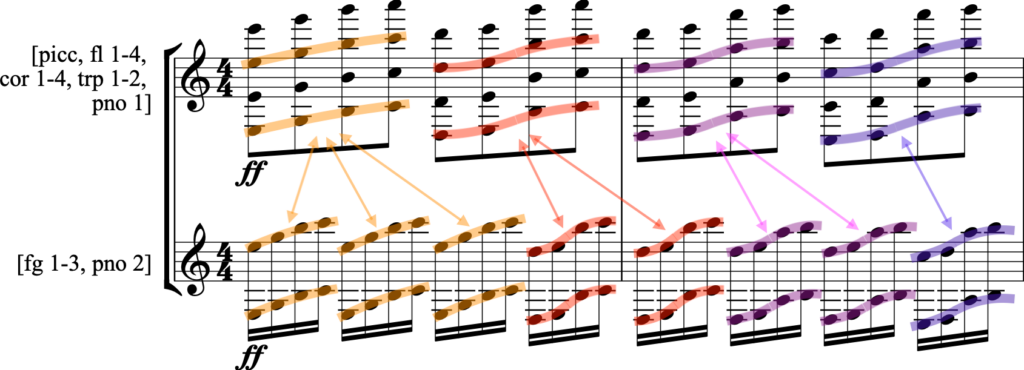
Figure 30. Several time-displaced doublings in double-time in Stravinsky’s Symphony of Psalms, 1st movement, rehearsal number 12.
A slight temporal delay can simulate acoustic resonance or echo effects, while displacement by larger temporal units will lead to a canonic, and thereby polyphonic, texture. Once again, a traditional distinction between orchestration (e.g., doublings) and composition (e.g., canon) comes into question.
4.6 Doublings by contour
Doublings by contour involve two distinct renditions of the same contour or figuration in the same register, played in approximate simultaneity. In this doubling method, the nearly identical directions tend to meld, aiming to create an overarching contour of ascending or descending motion. Figures 31 and 32 illustrate doublings by contour.

Figure 31. Doubling by contour – i.e., two simultaneous figurations realizing the same underlying chord – in Ravel’s Rapsodie Espagnole, 2nd movement, excerpt.
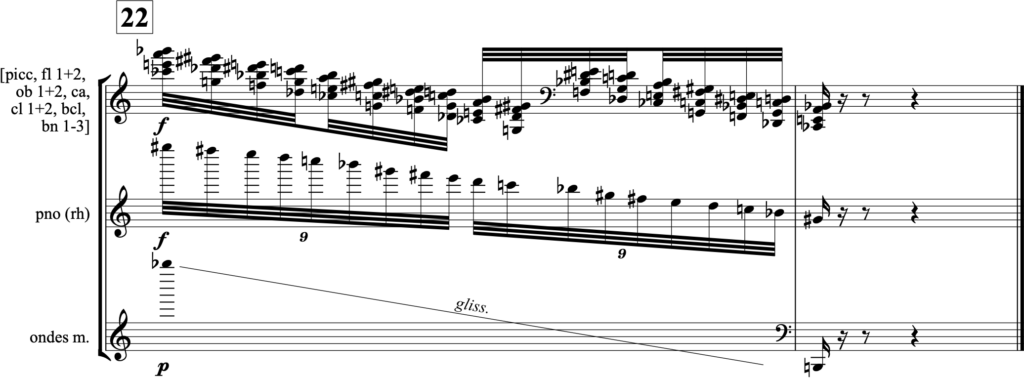
Figure 32. Doubling by contour of a downward motion in Messiaen’s Turangalîla Symphony, 1st movement.
4.7 Partial doublings
In partial doublings, only a subset of the notes is doubled. In Figure 33, the bass clarinet partially doubles the main melody played in the double bass, introducing a different articulation and color to the melody. In this case the constant change between double bass and partial doubling with bass clarinet could also be interpreted as split orchestration.

Figure 33. Ravel’s Rapsodie Espagnole, 2nd movement, excerpt. The bass clarinet only partially doubles the main melody in the double bass.
A more punctual use of partial doubling is found in Figure 34 where the winds help accentuate selected notes in the string parts.
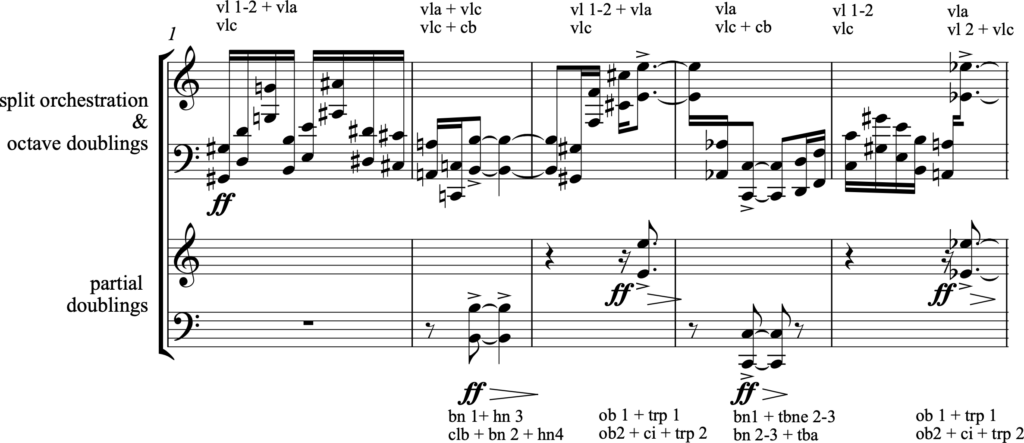
Figure 34. Messiaen’s Turangalîla Symphony, 1st movement. The winds partially double the strings with punctual emphasis.
Partial doublings are sometimes combined with temporal displacement, as seen in Figure 35, where the horn prolongs selected notes from the piano part, creating a form of orchestrated reverberation.

Figure 35. Stravinsky’s Symphony of Psalms, 1st movement , excerpt. A horn partially doubles the piano part.
A more unusual example of partial doubling is depicted in Figure 36. Here, the accented notes in the brass section marking the end of the clarinets’ descending glissando constitute interval-displaced partial doublings.

Figure 36. Lutoslawski’s Livre pour orchestre, 3rd movement, excerpt. Interval-displaced partial doubling by trumpets and trombones of the target note of the clarinets’ glissando.
Finally, Figure 37 shows a borderline case of partial doubling. In this instance, it can be challenging to discern what is being doubled (i.e., what is the same), but it seems as if the double bass is muting the sound of the bass drum; accentuating the end of the sound instead of the beginning. The dashed line marking the connection between the two is indeed Sciarrino’s own.

Figure 37. Sciarrino’s 4 Adagi, 1st movement, excerpt.
Overall, partial doublings present a more discernible method than traditional doublings, since the doublings are different (only partial) and thereby more separable from what they double.
4.8 Combination of doubling types
Figure 38 exemplifies a comprehensive orchestration that incorporates many of the methods described above.
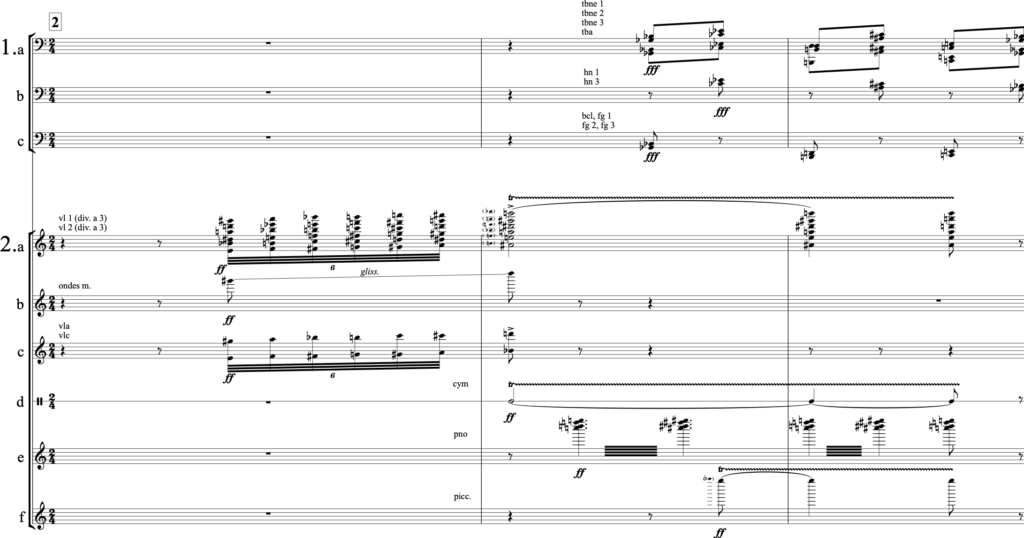
Figure 38. Messiaen’s Turangalîla Symphony, 1st movement.
The melody is introduced in the trombones and tuba, doubled by thirds and octaves, and partially doubled by woodwinds and horns, respectively.
The second compound textural element is fully realized in the 1st and 2nd violins. In the first half of this element, the top and bottom notes are partially doubled in the violas and celli, while the ondes martenot doubles the top notes with a similar motion (doubling by contour). The second half of the element is partially doubled by the cymbal and temporally displaced piano and piccolo. The timbral contrast between the instruments participating in this doubling is extraordinary. In this second textural element, fusion is not the primary intention; instead, a sensation of depth and layering emerges.
4.9 Chord spacing
Chord spacing in orchestration refers to how the notes of a chord are arranged across different octaves. A traditional orchestral chord spacing often mirrors the harmonic series, featuring larger intervals between notes in the lower range. Figure 39, taken from the final chord in the first movement of Stravinsky’s Symphony of Psalms, illustrates this typical orchestral chord spacing.
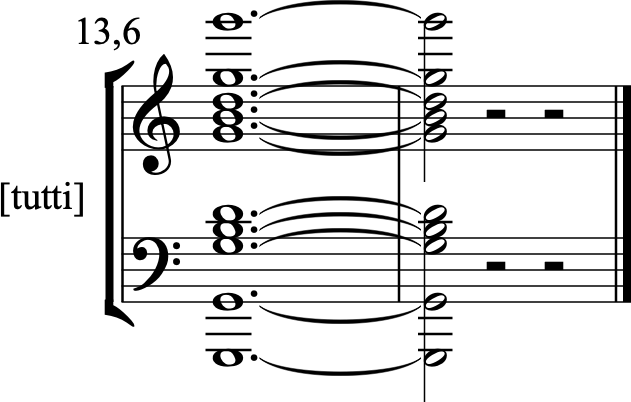
Figure 39. Stravinsky’s Symphony of Psalms, 1st movement. A typical orchestral chord spacing mimicking the beginning of the harmonic series in the lower range.
Doublings in chords constitute vertical partial doublings, as each doubling can only cover one note at a time from a chord with multiple pitch classes.3 When all doublings are added, a classical strategy emerges in balancing the members of the triad, with more doublings at the root than at the third and fifth (see Figure 40).
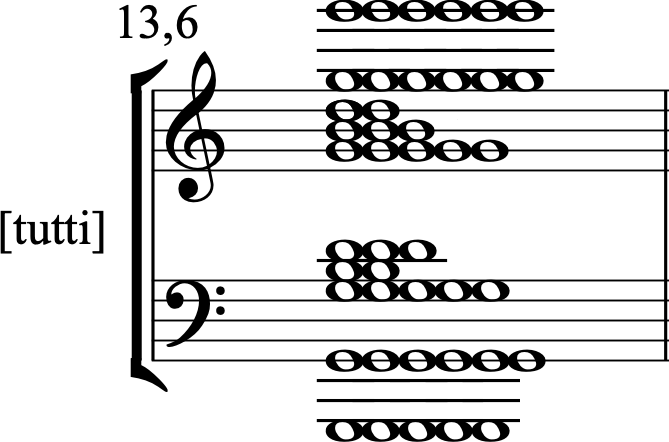
Figure 40. Stravinsky: Symphony of Psalms, 1st movement. The same chord as in Figure 33, but now with all doublings added, showing a clear propensity to double the root more than the third and fifth.
A highly unusual chord spacing is found at the beginning of the same piece (Figure 41). Here, all three members of the triad are competing in the lower range, creating strong interferences. The open space in the middle range allows the resulting clash between the harmonics of these low notes to be heard very clearly. The result is a percussive sound that is challenging to recognize as a minor chord.
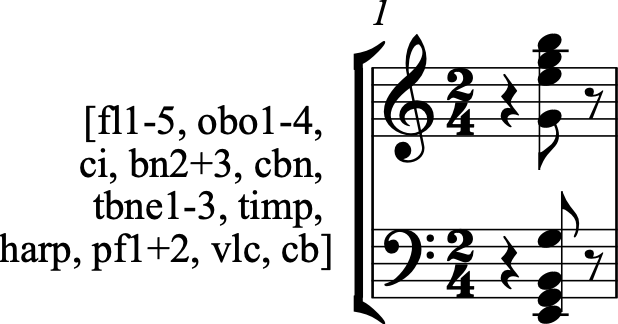
Figure 41. Stravinsky’s Symphony of Psalms, 1st movement. An usual chord spacing emphasizing clashing overtones in the most sensitive part of our hearing range.
The doublings of each note in the triad in this unusual spacing (Figure 42) are just as distinctive, with the thirds and fifths doubled more prominently than the root.
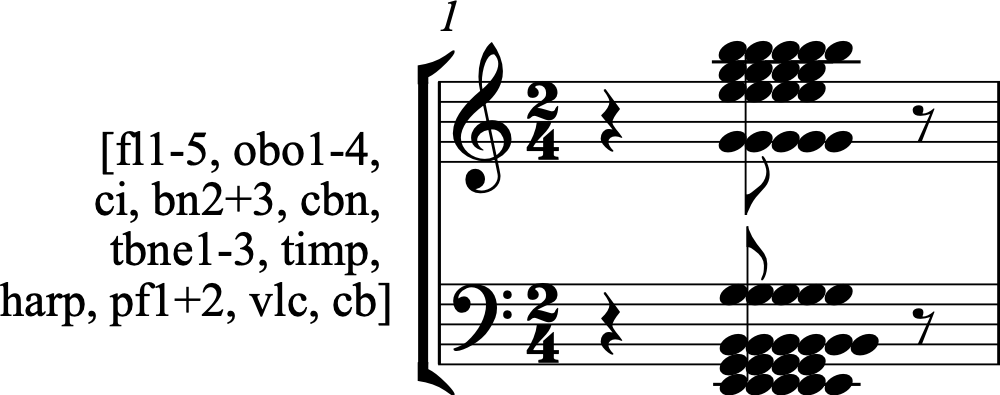
Figure 42. Stravinsky’s Symphony of Psalms, 1st movement.
The number of possible spacings and doublings in extended chords is almost infinite, and the placement of dissonance becomes crucial. In Figure 43, the octave placement of the dissonant major second is particularly interesting.

Figure 43. Extended chords in Stravinsky’s Symphony of Psalms, 1st movement.
Obviously, a dissonance increases the more times it is doubled by unisons or octaves. But it also calls more attention (literally “makes more noise”) in lower registers than in higher ones; it also becomes more distinct the more timbrally similar the instruments playing it are. On the other hand, separating the dissonant notes from each other diminishes the intensity of the dissonance, until it eventually dissolves into an overtone consonance (Figure 44).
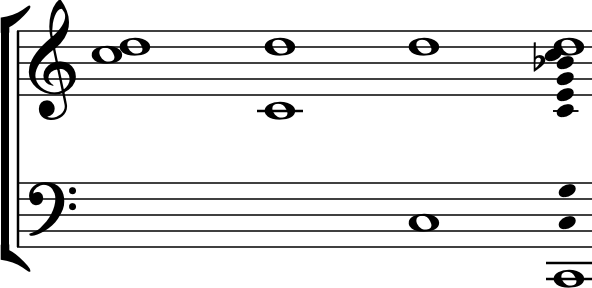
Figure 44. A major second becomes less dissonant the further one separates its constituent notes. Eventually, when separated by more than three octaves, the lower note features the upper note amongst its overtones.
The fully reduced version of the example (Figure 45, lower staves) from Stravinsky’s Symphony of Psalms features a sequence of chords. However, a more detailed reduction exposes it as layers of superimposed voices with several doublings (Figure 45, upper staves).
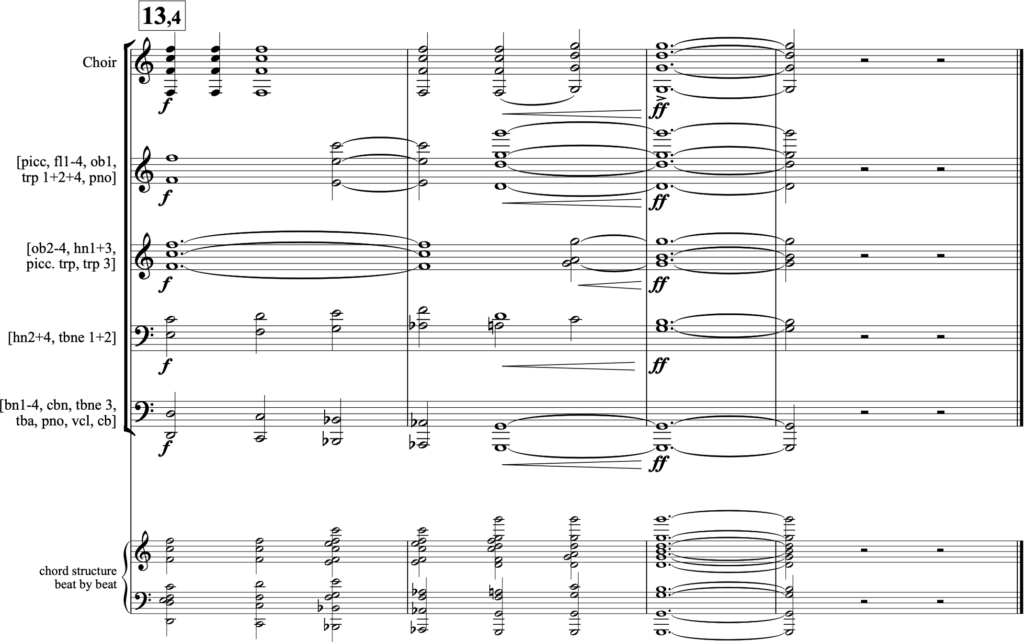
Figure 45. Extended chords in Stravinsky’s Symphony of Psalms, 1st movement.
4.10 Summary
Doublings do not add anything to the texture analysis – the number of textural elements remains the same regardless of the number of doublings. A doubling might be described as two instruments playing the same, but it remains negotiable, however, which degree of similarity is required for the same. Similarity, in this regard, could pertain to pitch, intervallic structure, rhythm, or contour, for example. Yet, there is a limit as to what can qualify as the same. It is thought-provoking that timbral similarity does not in itself lead to two instruments being identified as doublings of each other. Two flutes playing two different and rhythmically unrelated melodies, for example, do not constitute a doubling.
A doubling can be displaced by interval or in time, or even both, representing displacement along the vertical and horizontal dimensions, respectively, including doublings by parallel motion, similar motion or musical contours.
Partial doublings are used horizontally as well as vertically. Horizontally, they tend to be doublings at unison, although they can theoretical be displaced in time or interval; vertically, octave doublings are used to extend the chord to other octaveswet (i.e., chord spacing), while unison doublings are used to balance the prominence of individual notes within the chord.
The purpose of doublings can be many and varied. For example, doublings can be used to realize a desire for specific articulations, timbres, chord spacings, or dynamic balances. They also provide a way to emphasize the differences between different groups and soloists, or to bring the whole orchestral apparatus into play. Extremely simplified, unisons create a more wet and saturated sound (think, for example, of a string ensemble vs. a string quartet), parallel doublings give rise to a fuller timbre (like a filter on top of the instruments own timbre), octave doublings enlarge the sound, temporally displaced doublings create spatial effects (e.g., reverberation, reflection, and echo) while (horizontal) partial doublings accentuate selected notes of a textural element.
1) In conventional Western score notation, there is no indication on the intended size of the string sections. The size varies from orchestra to orchestra, suggesting that minor differences have little or no impact on the balance amongst the strings and between them and the rest of the orchestra. In more recent scoring practice, however, one sometimes finds more precise indications on the intended number of string players. –>
2) Tchaikovsky writes for flutes without B-foot, hence the deviation from the oboe parts in mm. 25 and 28. –>
3) These doublings are “vertical” since they are used for chord spacings, whereas the earlier mentioned partial doublings may mostly be described as “horizontal” given their typical span over time. –>
